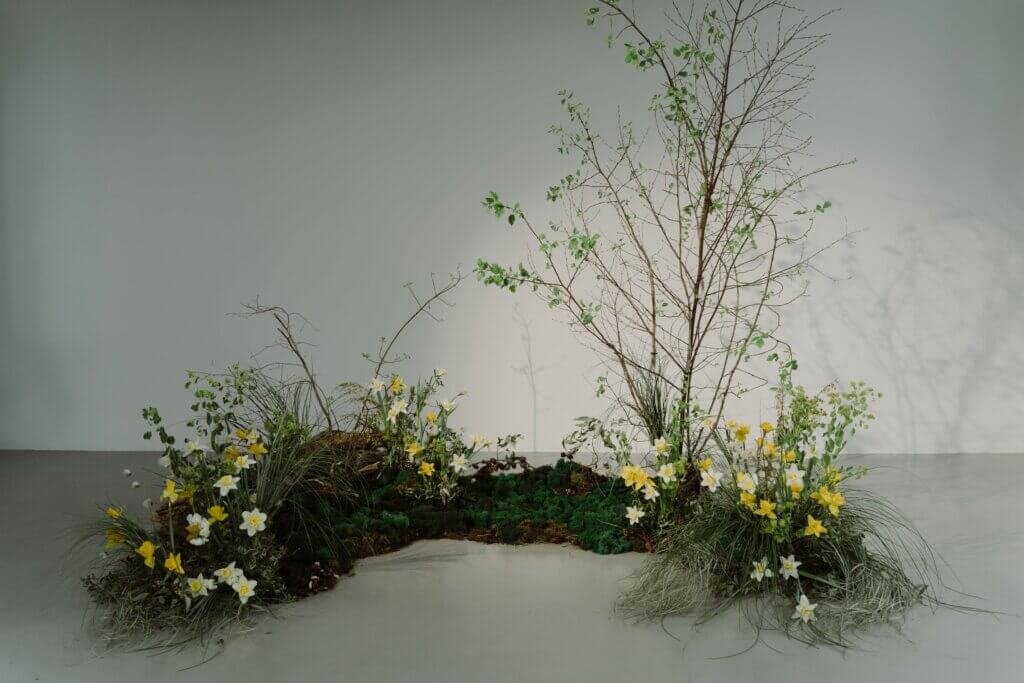Are you ready to transform your urban garden into a vibrant oasis of deliciousness? Look no further! In this article, we will guide you through the process of selecting the perfect edible plants for your urban garden. Whether you have limited space or a small balcony, we have got you covered. From aromatic herbs to colorful vegetables, discover the best options that will thrive in an urban environment. Say goodbye to store-bought produce and hello to the joy of growing your own food!

Factors to Consider
When choosing the best edible plants for your urban garden, there are several factors to consider. These factors will help you determine which plants are most suitable for your specific environment and preferences.
Climate and Growing Conditions
The climate and growing conditions in your area play a crucial role in determining which edible plants will thrive in your urban garden. Consider the average temperature, humidity, and sunlight exposure in your location. Some plants, like citrus trees, require warm and sunny climates, while others, like leafy greens, can tolerate cooler temperatures. It is important to choose plants that are well-suited to your climate to ensure their success.
Space and Container Size
In urban gardens where space is often limited, it is important to choose plants that can be grown in containers. Consider the size of your available space and choose plants that can be easily accommodated in pots or raised beds. Additionally, take into account the root depth of each plant and choose containers that are large enough to allow for proper root development. The size of the container will also determine how many plants you can grow, so consider both the space and container size when selecting your edible plants.
Time and Maintenance
Urban gardening requires regular maintenance and care, so it is important to choose edible plants that fit well into your schedule. Some plants require more attention and upkeep than others. Consider the time you can commit to your garden and choose plants that match your availability. If you have limited time, opt for low-maintenance plants like herbs. However, if you enjoy spending time in the garden and have more availability, you can choose plants that require more care, such as fruit trees or vegetables.
Personal Preferences
Your personal preferences and taste should also be taken into account when choosing edible plants for your urban garden. Consider the types of fruits, vegetables, and herbs that you enjoy eating the most. This will help ensure that you are growing plants that you will actually enjoy harvesting and consuming. Additionally, consider any dietary restrictions or preferences, such as vegan or gluten-free diets, when choosing your plants. By selecting edible plants that align with your personal taste and preferences, you will create a more enjoyable and satisfying urban gardening experience.
Popular Edible Plants for Urban Gardens
Now that you have considered the various factors, it’s time to explore some popular edible plants that are well-suited for urban gardens. These plants are known for their adaptability to container gardening and their ability to thrive in urban environments.
Herbs
Herbs are a great choice for urban gardens as they are relatively easy to grow and can be used in a variety of culinary dishes. Here are some popular herbs for urban gardens:
Basil
Basil is a versatile herb with a distinct flavor. It thrives in warm climates and requires plenty of sunlight. Basil can be grown in containers and is often used in Italian and Thai cuisine.
Mint
Mint is a fast-growing herb that can be aggressive if not contained. It is known for its refreshing flavor and is often used in teas, cocktails, and desserts. Mint plants can be grown in containers, but it’s important to keep them well-maintained to prevent them from spreading.
Rosemary
Rosemary is a perennial herb that is drought-tolerant and can withstand various climates. It has a woody and aromatic flavor, making it great for seasoning meats and vegetables. Rosemary can be grown in containers and requires well-drained soil and plenty of sunlight.
Thyme
Thyme is a low-growing herb with a fragrant and earthy flavor. It is often used in Mediterranean cuisine and pairs well with vegetables, meats, and soups. Thyme can be grown in containers, but it requires regular pruning to maintain its shape and promote healthier growth.
Parsley
Parsley is a biennial herb that is popular for its vibrant green leaves and fresh taste. It can be used as a garnish or added to various dishes for flavor. Parsley can be grown in containers and requires well-drained soil and moderate sunlight.
Leafy Greens
Leafy greens are another great option for urban gardens as they are packed with nutrients and can be grown in small spaces. Here are some popular leafy greens for urban gardens:
Lettuce
Lettuce is a staple in salads and is available in various varieties, including romaine, butterhead, and loose-leaf. It is easy to grow in containers and requires a cool and shady spot in your urban garden. Lettuce can be harvested multiple times, allowing for continuous supply throughout the growing season.
Spinach
Spinach is rich in iron and other essential nutrients. It can be grown in containers and thrives in cooler temperatures. Spinach leaves can be harvested at any stage of growth, and the plant can be continuously harvested throughout the season.
Kale
Kale is a nutrient-dense leafy green that is known for its resistance to cold weather. It can be grown in containers and requires moderate sunlight. Kale leaves can be harvested as needed, and the plant will continue to produce new leaves.
Swiss Chard
Swiss chard has colorful stems and dark green leaves, making it both aesthetically pleasing and nutritious. It can be grown in containers and requires moderate sunlight. Swiss chard leaves can be harvested throughout the growing season, and the plant will continue to produce new leaves.
Arugula
Arugula has a peppery flavor and can add a kick to salads and sandwiches. It can be grown in containers and requires moderate sunlight. Arugula leaves can be harvested when they reach the desired size, and the plant will continue to produce new leaves.
Root Vegetables
Root vegetables are an excellent choice for urban gardens as they can be grown in containers and provide a bountiful harvest. Here are some popular root vegetables for urban gardens:
Carrots
Carrots are a versatile root vegetable that can be grown in containers with deep soil. They require full sun and regular watering. Carrots can be harvested once they reach the desired size, typically around 2-3 months after planting.
Radishes
Radishes are quick-growing root vegetables that can be grown in containers with well-draining soil. They require full sun and regular watering. Radishes can be harvested in as little as 3-4 weeks after planting.
Beets
Beets are nutritious root vegetables that can be grown in containers with loose soil. They require full sun and regular watering. Beets can be harvested when they reach the desired size, typically around 2-3 months after planting.
Turnips
Turnips are easy to grow root vegetables that can be grown in containers with well-draining soil. They require full sun and regular watering. Turnips can be harvested when they reach the desired size, typically around 2-3 months after planting.
Potatoes
Potatoes are a staple food and can be grown in containers with deep soil. They require full sun and regular watering. Potatoes can be harvested once the foliage dies back, typically 2-4 months after planting.
Fruit Trees and Bushes
If you have enough space in your urban garden, consider incorporating fruit trees and bushes. These plants provide not only a bountiful harvest but also a visually appealing landscape. Here are some popular fruit trees and bushes for urban gardens:
Citrus Trees
Citrus trees, such as lemons, oranges, and limes, can be grown in containers and provide a fresh source of vitamin C. They require full sun and regular watering. Citrus trees can be harvested when the fruits are fully ripe.
Apple Trees
Apple trees come in various dwarf varieties that are suitable for container gardening in urban areas. They require full sun and regular watering. Apples can be harvested when they are fully ripe.
Blueberry Bushes
Blueberry bushes are relatively low-maintenance and can be grown in containers with acidic soil. They require full sun and regular watering. Blueberries can be harvested when they are fully ripe.
Raspberry Bushes
Raspberry bushes can be grown in containers and provide a delicious harvest. They require full sun and regular watering. Raspberries can be harvested when they are fully ripe.
Fig Trees
Fig trees are popular for their sweet and juicy fruits. They can be grown in containers and require full sun and regular watering. Figs can be harvested when they are fully ripe.
Berries
Berries are a great addition to urban gardens as they are packed with antioxidants and can be grown in containers. Here are some popular berries for urban gardens:
Strawberries
Strawberries are a sweet and juicy berry that can be grown in containers with well-draining soil. They require full sun and regular watering. Strawberries can be harvested when they are fully ripe.
Blackberries
Blackberries are delicious and can be grown on thorny bushes or trained on trellises. They require full sun and regular watering. Blackberries can be harvested when they are fully ripe.
Gooseberries
Gooseberries are tart and can be grown in containers with well-draining soil. They require full sun and regular watering. Gooseberries can be harvested when they are fully ripe.
Currants
Currants are small and tart berries that can be grown in containers with well-draining soil. They require full sun and regular watering. Currants can be harvested when they are fully ripe.
Raspberries
Raspberries are sweet and can be grown on thorny bushes or trained on trellises. They require full sun and regular watering. Raspberries can be harvested when they are fully ripe.
Edible Flowers
Edible flowers not only add beauty to your urban garden but also provide an additional source of flavor and nutrients. Here are some popular edible flowers for urban gardens:
Nasturtium
Nasturtium flowers have a peppery flavor and can be grown in containers. They require full sun and regular watering. Nasturtium flowers can be harvested when they are fully bloomed.
Calendula
Calendula flowers have a slightly spicy flavor and can be grown in containers. They require full sun and regular watering. Calendula flowers can be harvested when they are fully bloomed.
Lavender
Lavender flowers have a sweet and floral flavor and can be grown in containers. They require full sun and regular watering. Lavender flowers can be harvested when they are fully bloomed.
Dandelion
Dandelion flowers have a slightly bitter flavor and can be grown in containers. They require full sun and regular watering. Dandelion flowers can be harvested when they are fully bloomed.
Chamomile
Chamomile flowers have a calming and floral flavor and can be grown in containers. They require full sun and regular watering. Chamomile flowers can be harvested when they are fully bloomed.

Growing Techniques for Urban Gardens
In urban gardening, space is often limited, but there are several techniques that can maximize your growing potential. Here are some popular growing techniques for urban gardens:
Container Gardening
Container gardening is ideal for urban gardens as it allows you to grow plants in limited spaces. Choose containers of appropriate sizes for each plant and ensure they have proper drainage. Container gardening provides flexibility in terms of placement and enables you to move your plants as needed.
Vertical Gardening
Vertical gardening involves growing plants vertically instead of horizontally, utilizing walls, trellises, and other structures. This technique is particularly useful in small spaces, as it allows you to maximize your growing area. Plants like tomatoes, cucumbers, and beans can be trained to grow upwards, saving valuable ground space.
Hydroponics
Hydroponics is a soil-less gardening technique that involves growing plants in nutrient-rich water. This method is efficient and saves space, making it suitable for urban gardens. Hydroponic systems can be simple or complex, depending on your needs and experience. Leafy greens and herbs are particularly well-suited for hydroponics.
Aquaponics
Aquaponics combines hydroponics with fish farming, creating a symbiotic system where plants and fish mutually benefit each other. The fish waste provides nutrients for the plants, while the plants filter the water for the fish. Aquaponics is a sustainable and efficient method of gardening that can be implemented in urban spaces.

Resources for Urban Gardeners
As an urban gardener, it’s important to have access to resources that can support and enhance your gardening experience. Here are some resources for urban gardeners:
Local Nurseries and Garden Centers
Local nurseries and garden centers are great places to find a wide variety of plants and gardening supplies. They often have knowledgeable staff who can provide guidance and advice based on your specific needs and preferences. Support your local nurseries and garden centers to contribute to your community.
Online Plant and Seed Suppliers
If you’re unable to find specific plants or seeds locally, online plant and seed suppliers offer a wide range of options. They usually provide detailed information about each plant or seed, including growing requirements and tips. Take advantage of online resources to access a broader selection of plants for your urban garden.
Community Gardens
Joining a community garden is a fantastic way to connect with other urban gardeners and learn from their experiences. Community gardens provide shared gardening spaces where you can grow your plants alongside others, fostering a sense of community and collaboration. Many community gardens also offer educational programs and workshops to help you develop your gardening skills.
Gardening Courses and Workshops
Gardening courses and workshops are excellent opportunities to expand your knowledge and learn new techniques. Local colleges, community centers, and botanical gardens often offer classes on various gardening topics. These courses can teach you valuable skills and introduce you to fellow gardening enthusiasts, creating a supportive network of like-minded individuals.
In conclusion, choosing the best edible plants for your urban garden requires careful consideration of various factors such as climate, space, time, and personal preferences. By selecting suitable plants and utilizing appropriate growing techniques, you can create a thriving urban garden that provides you with delicious and nutritious harvests. Remember to take advantage of available resources and seek out opportunities to expand your gardening knowledge. Happy gardening!



